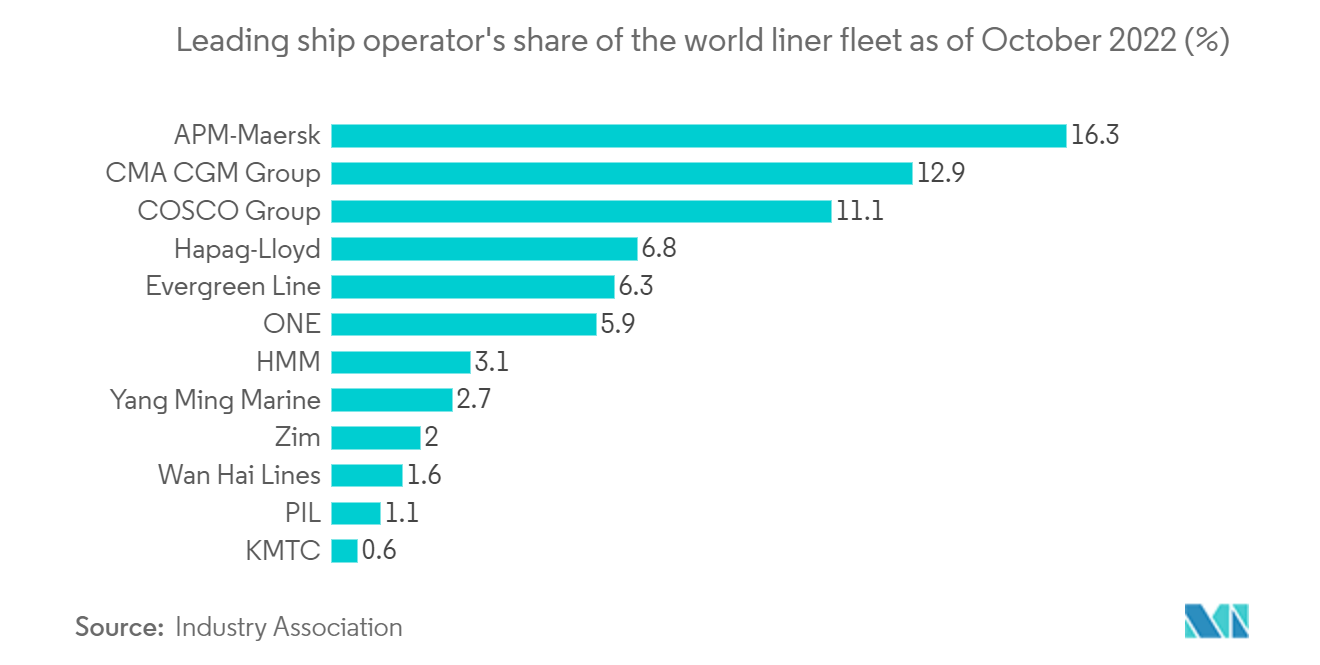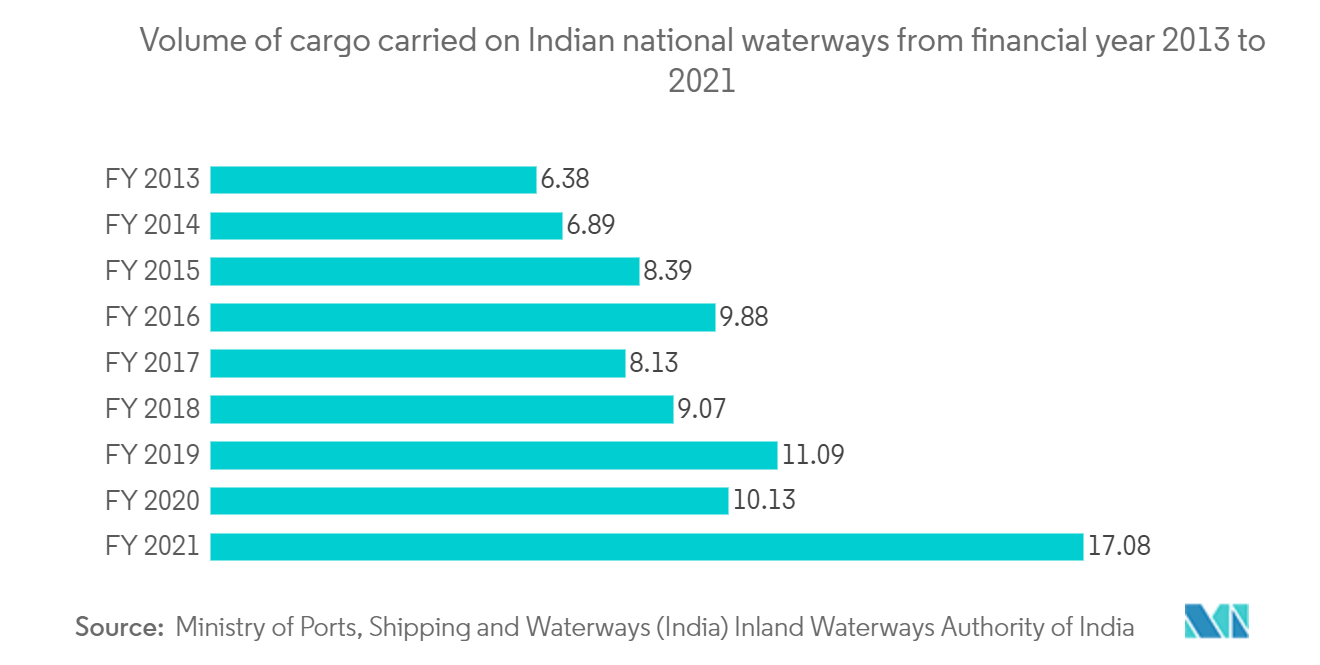Market Trends of Inland Water Freight Transport Industry
This section covers the major market trends shaping the Inland Water Freight Transport Market according to our research experts:
Increasing use of AI and Data analytics platform for better vessel management
A growing trend in the inland water freight transport business is the creation of information technology platforms for better vessel management. With the use of cloud-based services that permit remote access to information, software solutions designed for vessel management assist in managing and organizing all vessel operations, including crew administration, communications, and ship-based service requests, from the office.
Seamless application of vessel monitoring solutions enables operators to track their vessel movements and allows crew members to share shipboard data with headquarters for further analysis, simplifying the decision-making processes and improving operational efficiency.
For the purpose of reducing GHG emissions and fuel costs, maritime enterprises are increasingly aiming to employ energy-efficient integrations. This calls for upgrading a number of systems on board the ship, from the scrubber and rudder to the lubrication, coatings, and propulsion units. For instance, while some businesses focus on improving ship and exhaust design, others offer waste heat recovery technologies. With the help of these additions, maritime businesses may dramatically increase the sustainability of their operations while spending less on fuel and energy.
Artificial intelligence is used in the marine industry for a variety of purposes, including route optimization, autonomous navigation, and predictive maintenance. The crucial purpose of AI in these processes is to digest the enormous amounts of data made available by sensors, public information systems, and asset tracking in order to produce insights that may be put to use. Startups use the analyzed data to increase forecasting precision and save operating, maintenance, and fuel costs. In addition, AI in underwater robots and vehicles makes it easier to conduct search and rescue missions and aid in underwater repairs. Startups also offer digital twins of fleets, ports, and ships that use AI to continuously monitor their operations and enhance vessel and port management.
In order to stay competitive, many leading ocean carrier businesses are currently automating their processes, robotizing certain job functions, digitizing data, utilizing the cloud, the IoT, etc. Therefore, they are not far from being interested in autonomous navigation because it offers advantages in terms of transportable cargo volume, reduction of environmental pollution, reduction of operating costs, and reduction of operating time, all of which would enable them to increase the number of trips and the service they provide to their clients, which includes freight forwarders.

Asia Pacific is the fastest growing market for inland water freight transport
Comparing inland canal transportation to land-based systems, which frequently struggle with congestion and capacity issues, it is generally agreed that inland waterway transportation is the cleanest, safest, and most energy-efficient means of transportation. Inland water transportation can be encouraged as a modal shift alternative to road transportation, which may reduce the number of traffic accidents involving large goods vehicles. For instance, only 5% of all vehicles in India are trucks, but they cause 26% of all traffic accidents. Additionally, by establishing a shared transportation route between multiple nations that share a river, inland waterway transportation has the potential to enhance regional cooperation and integration. This may be seen in the way that Europe has made use of rivers like the Danube and Rhine to promote trade within the continent.
India wants to expand its ambition to connect rivers throughout Southeast Asia all the way to Thailand in an effort to interconnect local river channels and boost trade. Shippers, logistics players, and cargo owners should benefit from the planned international waterways network, which will span over 5,000 km and pass through eight nations. Over USD 50 billion in trade is thought to be possible through the network. The Myanmar seaport at Sittwe has already been constructed by India. It is now usable for navigation. Since Sittwe and Mizoram are connected by rivers, this development will be advantageous for both Mizoram and Tripura as it facilitates international trade. New economic routes with Myanmar, Singapore, and Thailand are anticipated to emerge once these inland waterways are connected with coastal shipping, creating a cascade of various repercussions throughout the region.

